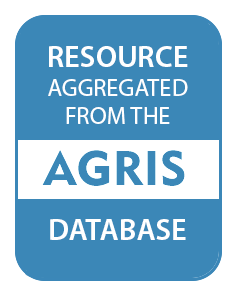About Springer
Throughout the world, we provide scientific and professional communities with superior specialist information – produced by authors and colleagues across cultures in a nurtured collegial atmosphere of which we are justifiably proud.
We foster communication among our customers – researchers, students and professionals – enabling them to work more efficiently, thereby advancing knowledge and learning. Our dynamic growth allows us to invest continually all over the world.
We think ahead, move fast and promote change: creative business models, inventive products, and mutually beneficial international partnerships have established us as a trusted supplier and pioneer in the information age.
Members:
Resources
Displaying 806 - 810 of 1195Harvesting Freely Roaming Public Resources: Can Property Owners Harvest Kangaroos Utilizing Their Land Without Impacting Neighbors?
In Australian semiarid rangelands, there have been suggestions that kangaroo harvesting should be given much more serious consideration as a supplement or even replacement to income from domestic stock like cattle and sheep. The possibility of kangaroo harvesting ever being economically viable, however, is often dismissed due to the impossibility of constraining these freely roaming animals to a particular property. In this paper, we explore the extent to which landholders do have control of their harvests regardless of the activities on neighboring land.
integrated approach to environmental quality assessment in a coastal setting in Campania (Southern Italy)
The coastal region of Southern Italy’s Caserta province, known as the Litorale Domitio (Domitia coast) has been subjected to increasing pressure from unsustainably fast economic and urban growth in the last century, that resulted in a induced serious land degradation. To obtain a comprehensive picture of the ecological status of the Domitia coastal zone (Campania, Southern Italy), a holistic methodology has been applied. Sedimentological, geochemical, and biological analyses of the surface sediments and water samples were performed along the submerged beach.
Monitoring changes in pastoral resources in eastern Sudan: A synthesis of remote sensing and local knowledge
The pastoral resources in eastern Sudan are changing under the combined impact of increasing anthropogenic activities such as clearance of natural vegetation and the effect of state policies that favour crop farming against pastoralism. Remotely sensed data are used to detect spatial and temporal changes from 1979 to 2009 in the land use/land cover (LULC) across three study sites. Areas of natural vegetation have been reduced from 26.1% in 1979 to 12.6% in 1999 and further to 9.4% in 2007. The majority of this reduction went into agricultural land.
Comparative field performance of some agricultural crops under a canopy of Populus deltoides and Ulmus wallichiana
The performance of maize, beans and sunflower was evaluated under a canopy of Populus deltoides and Ulmus wallichiana at Faculty of Agriculture, Wadura. The germination, growth and yield of the three test crops were suppressed under both tree species. The reduction, however, decreased when the cultivation of test crops was continued for three years. The inhibition potential generally is in the order of P. deltoides U. wallichiana for beans. Available soil N, P and K increased under the canopy of the selected tree species. The soils under U.
Flora biodiversity change detection: a case study
Changes in flora biodiversity are a dilemma facing managers in order to cope with challenges of extinction or endangering plant species as well as replacement by invasive species. Such problems can occur in the region as disruption of ecosystem balance. The first step of proper management of a watershed is obtaining accurate information about plant communities and their dominance and biodiversity status. Such information will help decision makers to adopt an appropriate management approach.


